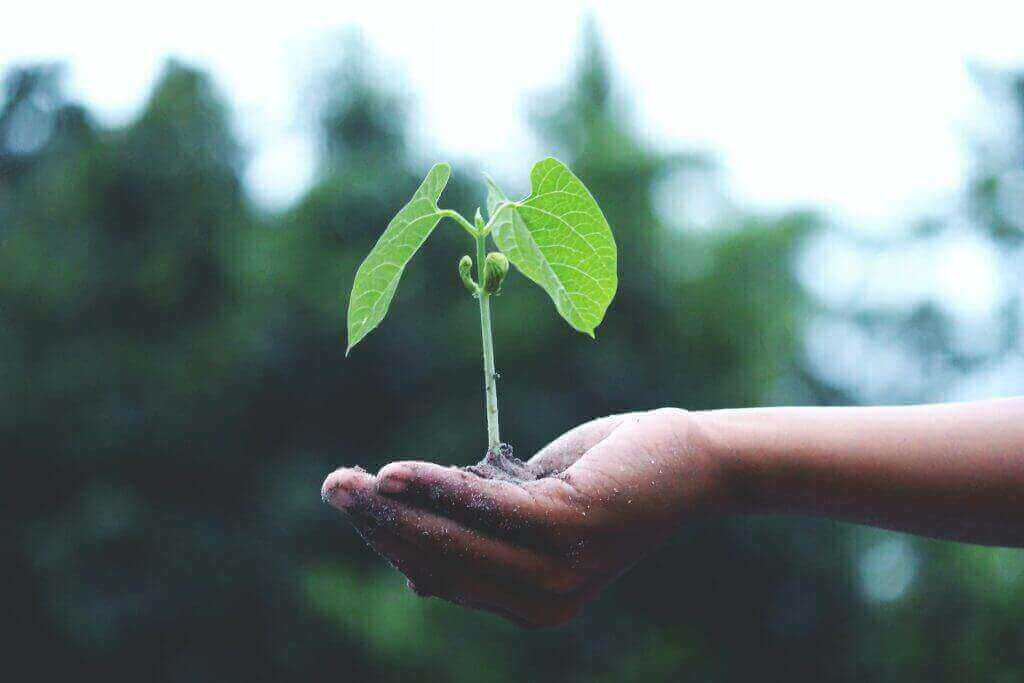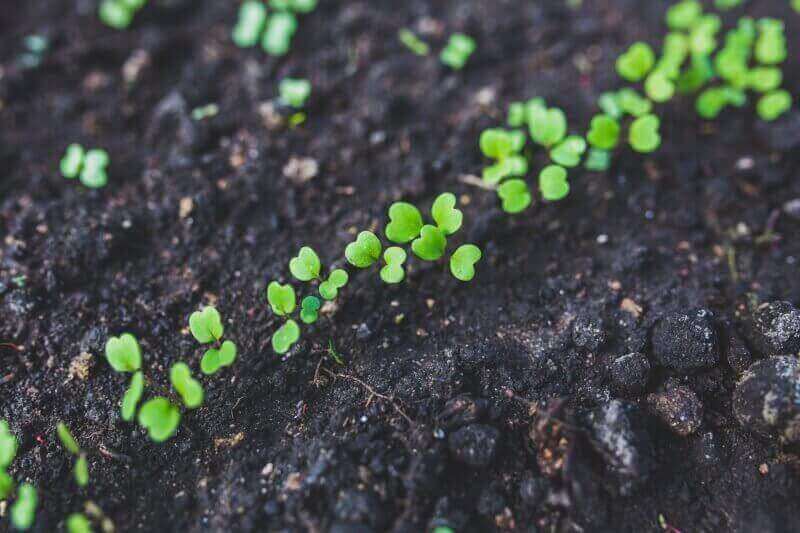All plants originate from seeds and whether you are planting seeds to grow microgreens, sprouts, or flowers and vegetables, all of the seeds will need to germinate.
The germination process of seeds has 6 stages, and during this time they will have different requirements than when germination has taken place.
What Are the 6 Stages of Germination?
The lifespan of different plants can vary greatly but if left to develop fully, they will all go through 6 stages: sprout, seedling, vegetative, budding, flowering and ripening.
Sprout
A seed is basically a parcel of nutrients. The nutrients contained in the parcel are sufficient to allow the plant’s first set of leaves to form.
Seedling
It is during this stage that the roots start to grow and spread, allowing the plant to absorb the nutrients for further development.
Vegetative
Chlorophyll is the green pigment in plants and nitrogen is the main component of chlorophyll. As chlorophyll is essential to a plant’s photosynthesis processes, this is the stage where a plant will absorb the nutrients it needs to further the growth of its stalks and foliage.
Budding
This is the stage when a plant starts to develop its reproductive system. In order to do this the plant needs to focus on absorbing phosphorus, essential for forming buds.
Flowering
In order to successfully produce flowers and fruit, during this stage a plant must focus on absorbing potassium. Potassium plays a major role in the transportation of starch and sugars needed for the development of the flowers and fruit.
Ripening
This is also sometimes referred to as the flushing stage and during this stage the plant will only require water.
What is the Last Stage of Germination?
This stage starts at flowering and lasts until the plant is either harvested or the season ends. It is during this stage that a plant will use up any excess nutrients it has absorbed previously. Hence it only needs water and therefore the stage is referred to as the flushing stage.
How Many Days until Seeds Germinate?
Different plant types will differ in the time it takes for them to germinate, but most will germinate in 1 to 2 weeks. There are some plants, however, such as mini-tomatoes, rosemary and chili peppers that may take up to 3 weeks. Other plants, such as lettuce, are susceptible to heat and so, too much heat may delay their germination.
Seed packages will have information on how best to plant the seeds and the expected number of days for germination.

What Happens to a Seed During Germination?
Before a seed will germinate it will go through a period of dormancy. Whilst some seeds, like those of annuals, may start to germinate as soon as conditions are right and therefore have a short dormancy period, others have longer periods of dormancy.
In order for a seed to begin to germinate, its covering must be breached to allow water to enter. In some instances a seed’s coating may only be breached whilst in the gut of an animal but many will have their coating weakened and start to germinate as conditions become suitable for plant growth.
Once a seed’s coating has been breached, water will be absorbed (imbibition) initiating the germination process. As the seed becomes re-hydrated it’s cells will expand. As the water intake increases the seed’s respiration also increases. The increased respiration promotes metabolic processes which had been suspended during dormancy.
As the seed embryo increases in size due to the water intake, it will usually push out a root. In some plants though, such as coconuts, the shoot will be the first to emerge. As expansion continues, division of the root or shoot begins. This division continues until the plant has sufficient to absorb its own nutrients, at which time the seed has fulfilled its germination obligations.
Why Do Seeds Need Darkness to Germinate?
Although some seeds can germinate in light, most require darkness to do so. The reason for this is that light promotes the hardening of a seed’s coating. Light does this by expelling oxygen, decomposing carbon acid gas and thereby hardens part of the seed, preventing germination.
As seeds need heat and moisture in order to germinate, storing or transporting seeds should be done with the opposite in mind, a cool and dry atmosphere.
Is April Too Late for Seeds?
If you intend to plant seeds and then transfer the plants outside, the time of year you plant them will depend on your location. As a general rule of thumb, know when your last frost is usually experienced and then count forward the time it is expected for your seeds to germinate.
Is it Too Late to Start Growing Seeds Indoors?
This will depend on what you intend to grow, as microgreens and sprouts can be grown indoors all year round with the right conditions. However, if you plan to move them outside then consider the rule of thumb mentioned above.
Sprouting Seeds and Germination Summary
Whilst all seeds germinate, if you are growing microgreens or sprouts, you will harvest them prior to the full germination process being completed. This means that sprouts and microgreens, not being dependent on weather conditions, can be grown and harvested indoors.
Most seeds need to be stored and transported with their environment in mind but seeds for sprouts and microgreens need the extra precaution of not being subjected to additives. Seeds specifically for microgreens and sprouts can be obtained from Todd’s Seeds, free of fertilizers or other potentially harmful additives.
Most seed packages will have growing instructions, however, if further growing instructions are needed, they can easily be found online.
You can also watch the video version of this article below.
Subscribe to our channel for more gardening and sprouting videos: Todd’s Seeds Youtube Channel


You must be logged in to post a comment.